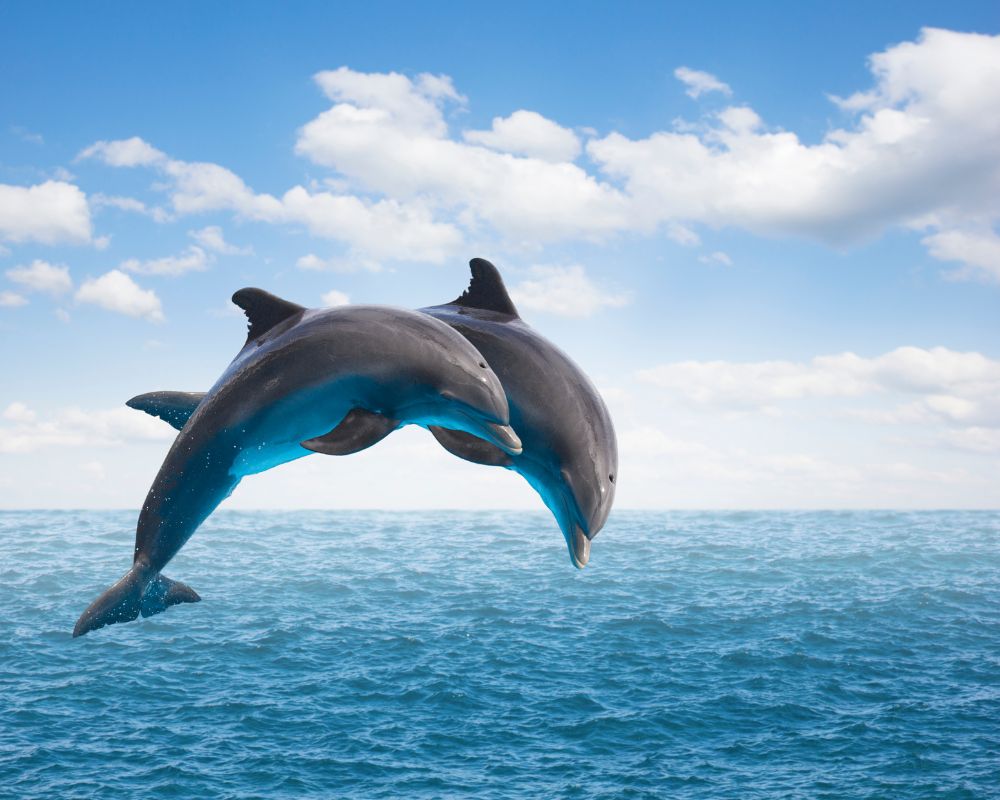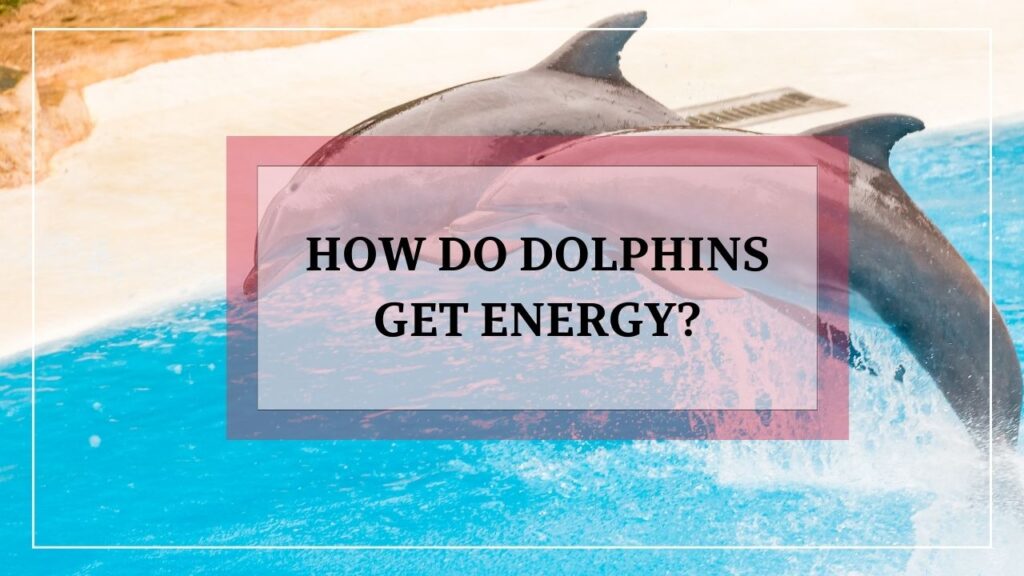Today, we’re going to talk about one of the most fascinating creatures in the ocean: dolphins. If you’re anything like me, you’ve probably seen pictures or videos of dolphins swimming gracefully through the water and performing incredible acrobatics.
But have you ever stopped to wonder how these creatures are able to sustain such impressive feats of athleticism? The answer lies in the energy that dolphins get from their food.
In this blog post, we’re going to dive deep into the topic of how dolphins get energy. We’ll explore the types of food that dolphins eat, how they digest their food, and most importantly, how they convert that food into the energy they need to swim, hunt, and play.
So, if you’re ready to learn more about these amazing creatures and how they get their energy, then let’s get started!
How Do Dolphins Get Energy?

Dolphins get energy by converting the food they eat into usable energy through their complex digestive system.
This energy is then used to power their bodies and carry out necessary functions like swimming, hunting, and playing.
Without enough energy, dolphins would not be able to sustain their impressive athleticism and maintain their health and well-being.
The Conversion Process
First things first: how do dolphins convert the food they eat into energy? Well, it all starts with the digestive system. Dolphins have a complex digestive system that allows them to extract nutrients from their food and convert it into usable energy.
When dolphins eat, the food is broken down in their stomachs and intestines into small particles.
These particles are then absorbed into the bloodstream, where they are transported to the cells throughout the body. Once inside the cells, the nutrients are converted into ATP (adenosine triphosphate), which is the energy currency of the body.
The Importance Of Energy
Now that we understand how dolphins convert their food into energy, let’s talk about why energy is so important for these creatures. Dolphins need energy for everything from swimming to hunting to playing. Without enough energy, they wouldn’t be able to carry out these necessary functions.
For example, swimming is one of the most energy-intensive activities for dolphins. They need a lot of energy to power their bodies through the water and maintain their body temperature.
Hunting also requires a significant amount of energy, as dolphins must use their speed and agility to catch their prey. And let’s not forget about playing – even this requires energy, as dolphins need to be able to jump and flip in the water.
In short, energy is essential for dolphins to carry out their daily activities and maintain their health and well-being.
Fun Fact: Dolphins Can Sleep with Half Their Brain
Before we wrap up this section, here’s a fun fact about dolphins and their energy levels. Did you know that dolphins can sleep with half their brain at a time? This is because they need to be able to come up for air while they sleep. [1]
By sleeping with one half of their brain at a time, they can continue swimming and surfacing for air even while they sleep. Talk about efficient energy use!
Energy requirements of dolphins
As we learned earlier, dolphins need a lot of energy to power their bodies and carry out necessary functions like swimming, hunting, and playing. But how much energy do they actually require?
To understand this, we first need to look at the energy requirements of marine mammals in general. As warm-blooded animals that live in cold water environments, marine mammals have high energy demands.
They need to consume large amounts of food to maintain their body temperature, support growth and development, and power their movements.
Factors Affecting The Energy Requirements Of Dolphins
The energy requirements of dolphins can vary depending on several factors, including age, sex, reproductive status, and activity level.
For example, pregnant or lactating females require more energy to support the growth and development of their offspring. Juvenile dolphins also have higher energy requirements due to their rapid growth and development.
In addition to these biological factors, environmental conditions can also impact the energy requirements of dolphins. For example, the water temperature can affect the metabolic rate of dolphins and the amount of energy they need to maintain their body temperature.
Availability of food can also have a significant impact on dolphin energy levels, as they need to consume enough food to meet their energy demands.
Comparison Of Energy Requirements Of Different Dolphin Species
Different dolphin species have different energy requirements based on their size, activity level, and environment.
For example, smaller dolphin species like the common dolphin and spinner dolphin have lower energy requirements than larger species like the killer whale or bottlenose dolphin.
Dolphins that live in warmer water environments may also have lower energy requirements than those that live in colder waters, as they don’t need to expend as much energy to maintain their body temperature.
Factors That Affect Dolphin Energy Levels
Now that we know how dolphins get energy, let’s take a closer look at the various factors that can affect their energy levels.
Biological Factors
Age, sex, and reproductive status can all play a role in a dolphin’s energy levels. For example, younger dolphins may have higher energy levels than older ones, as their bodies are still developing and growing.
Male dolphins may also have higher energy levels than females, as they tend to be larger and more muscular. And when female dolphins are pregnant or nursing, they may require more energy to support the growth and development of their young.
Environmental Factors
In addition to biological factors, environmental factors can also have a significant impact on dolphin energy levels. Water temperature, for example, can affect how much energy dolphins need to maintain their body temperature.
If the water is too cold, dolphins may need to use more energy to stay warm. On the other hand, if the water is too warm, dolphins may become overheated and need to conserve their energy.
Availability of food is another environmental factor that can affect dolphin energy levels. Dolphins require a lot of food to maintain their energy levels, and if they are unable to find enough food, they may become weak and lethargic.
This is particularly true for dolphins that rely on specific types of prey, as changes in the availability of these prey can have a significant impact on their energy levels.
The Importance Of Maintaining Optimal Energy Levels
Maintaining optimal energy levels is crucial for the health and survival of dolphins. Without enough energy, dolphins may become weak and vulnerable to predators, disease, and other threats.
They may also be less able to carry out necessary functions like swimming and hunting, which can further impact their health and well-being.
On the other hand, having too much energy can also be problematic for dolphins. If they consume more food than they need, they may become overweight and have difficulty swimming or hunting effectively.
This is why maintaining a balance of energy intake and expenditure is essential for dolphins to maintain their health and fitness.

